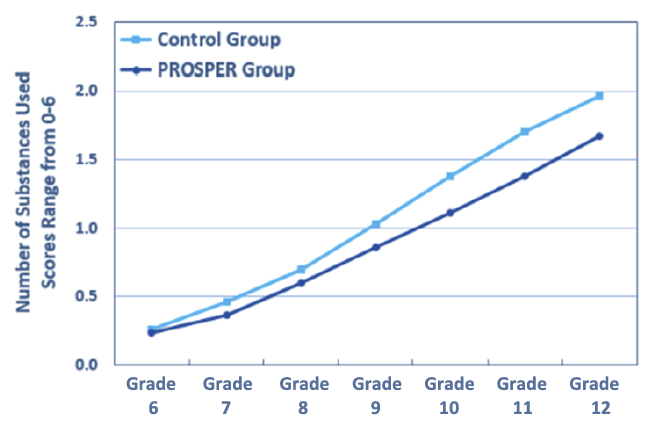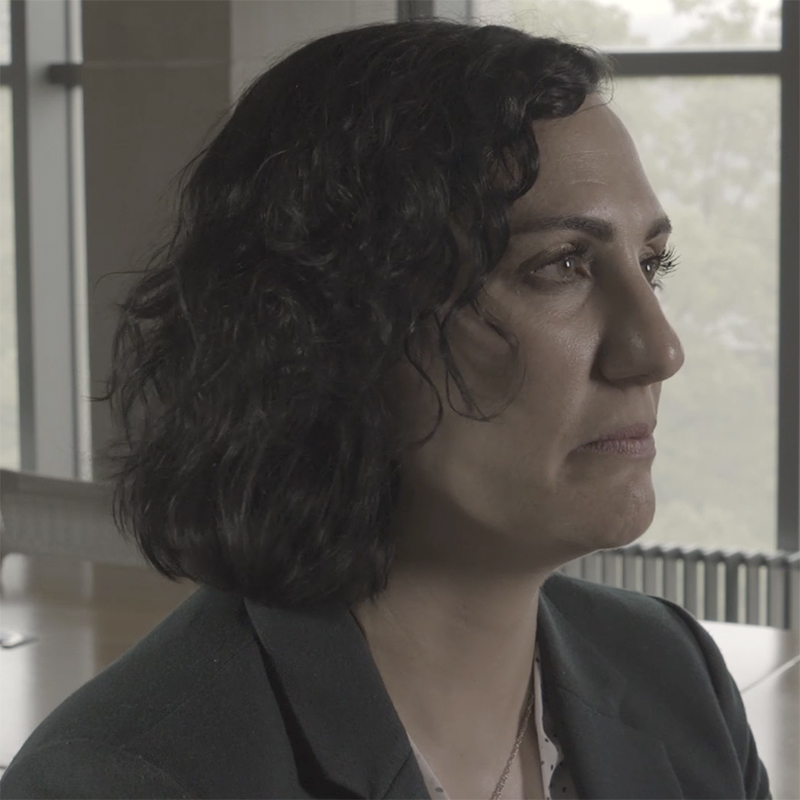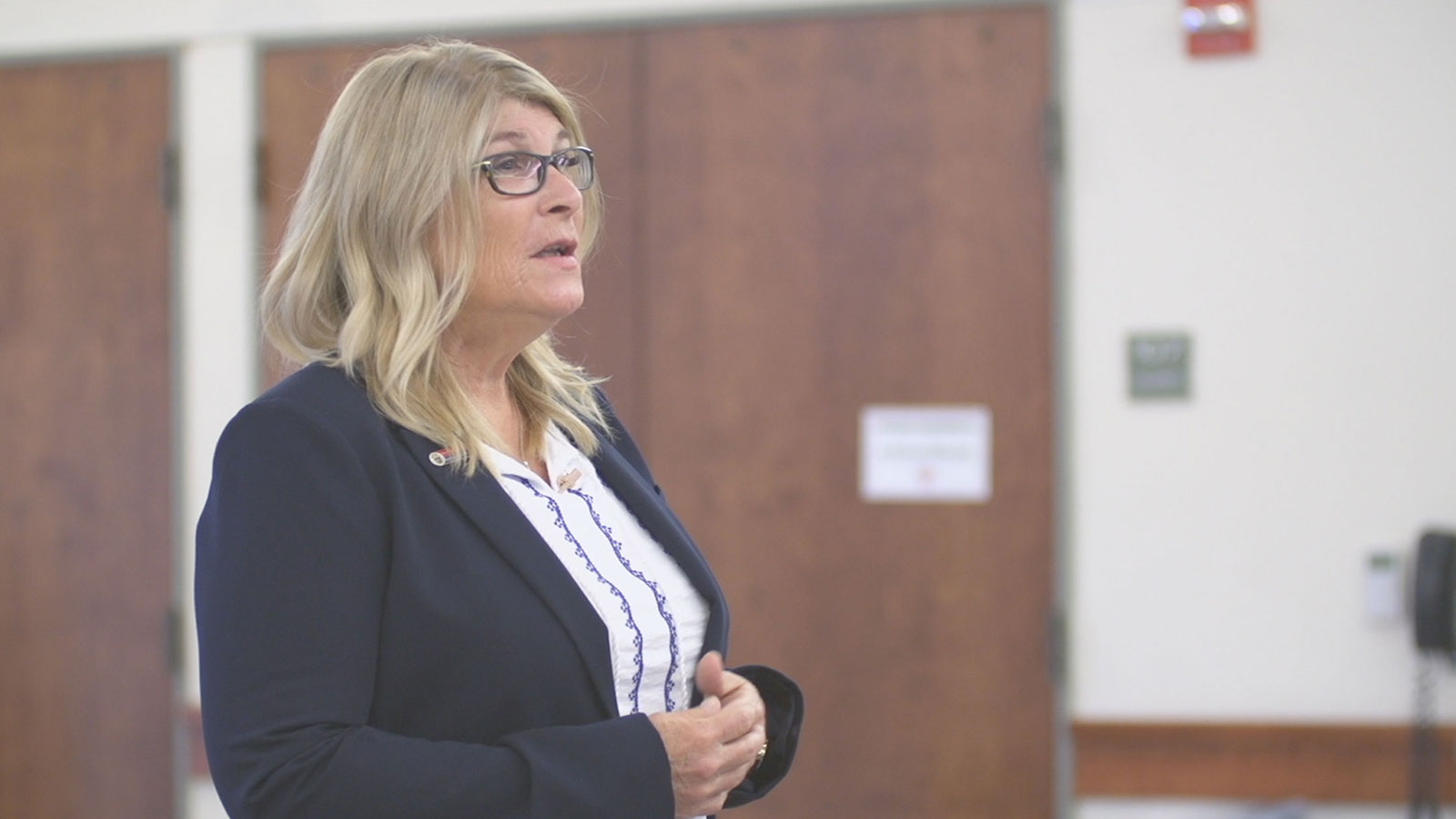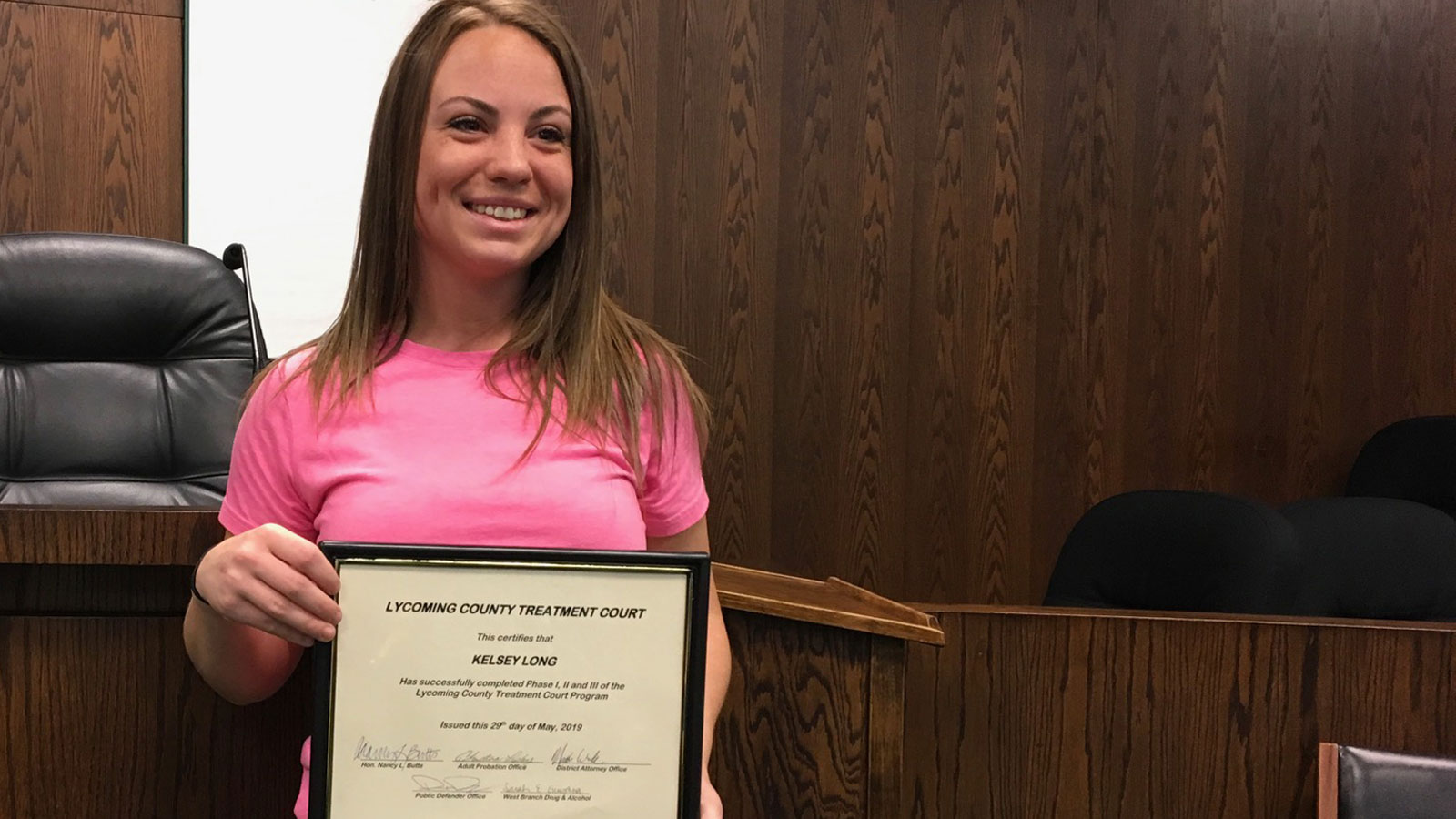Prevention Options
Prevention science doesn't receive much attention, because when it works, nothing happens! Learn more about prevention programs that can successfully prevent risky behaviors and other strategies that individuals and the medical community can take to help prevent access to opioids.
Anne Danahy (Narrator) – Prevention is key when it comes to the opioid epidemic. But, it doesn’t always get a lot of attention.
I’m Anne Danahy, and this is “Overcoming an Epidemic: Opioids in Pennsylvania,” a WPSU podcast looking at what researchers, communities and government agencies are doing to try to treat and prevent opioid addiction.
[Two people talking]
“Hey Conor.”
“Hey, Melissa. What’s up?”
AD – I’m in the Carbondale Elementary School on a summer day when school is out. And I’m part of a group eavesdropping on a conversation. Two adults — Melissa Tomascik and Conor Durkin are playing the roles of teenagers — one trying to draw the other into smoking marijuana. It’s one of many scenarios that day focused on prevention.
[talking]
“Nothing. I was wondering what you’re doing after school. If you want to meet at 3:30. … Do you want to meet out back at 3:30?”
“Sure. I’ve got no plans, what do you want to do?”
“I brought this.”
“That’s illegal. That’s a drug. That’s smoking.”
Melissa Tomascik: “We’re not going to get caught.”
Conor Durkin: “I’m not old enough.”
MT – That’s OK
CD – I could get in a lot of trouble with my parents.
AD – In this scenario, the idea is to help young people be ready to respond to peer pressure and get themselves out of risky situations.
The guidance counselors, extension agents and community members are learning how to run programs like this in their communities. Called Strengthening Families, it’s a program for 10 to 14-year-old children and their parents. It’s part of a larger initiative called PROSPER.
Tomascik is a PROSPER prevention specialist.
MT – “I love this saying about what prevention is. You’re at a river, right, and these people keep coming down the river, and you have to keep jumping in to save them. But you can only do that for so long before you go up to the river and see what the problem is. So you could stop it before you’re having to just keep saving people. So that’s kind of what prevention is. We’re stopping the problems, the risks, before they happen.”
AD – PROSPER has been around for close to 20 years. Faculty at Penn State and Iowa State University developed it. What’s key, those behind it say, is that it’s based in research and evidence.
They’re honest about it. They don’t say that it will stop all kids from doing any drug ever. Instead, it’s been shown to reduce the risk of kids drinking, smoking, doing drugs.
What PROSPER isn’t is like the anti-drug programs many people may remember. Like the original DARE (Drug Abuse Resistance Education), Scared Straight or this ad:
[Dramatic sound]
Man’s voice: “OK, last time.”
[Sizzling noise]
Man’s voice: “This is your brain on drugs. Any questions?”)
MT – “We know that scare tactics do not work. .. It could actually have a negative outcome as well.”
AD – Tomascik explains why they think what they do works.
MT – “With these prevention programs, we’re talking a little bit about what the drugs are, what the main drugs are. But, mostly we’re trying to emphasize building the child, building the skills within the youth, within peer pressure resistance, healthy goals and dreams for the future, how drugs and alcohol and other risky behaviors could keep you from those dreams and goals. Really, building up not only the youth, but the family and the parent connections as well.”
AD – Pennsylvania is one of the states most affected by the opioid epidemic. And, young people make up a disproportionate share of fatal overdoses — almost a third of drug-related overdose deaths in 2018.
PROSPER is an acronym: PROmoting School-community-university Partnerships to Enhance Resilience. That’s a mouthful.
What PROSPER does is bring together schools, communities and Penn State cooperative extension agents, who share information and resources statewide. Together, they offer prevention programs. That includes an in-school program for seventh-graders. And, an after-school program for children and families.
The organizers go to lengths to get people in the community to participate, with an eye to getting a mix of all different types of families.
Another exercise that day in Carbondale focuses on communicating.
[Tomascik giving instructions]
AD – This time, the participants are blindfolded and told to pick up part of a string from the floor. The goal is for them, working as a team, to form a square. That means practicing their communication skills — something the PROSPER teams want to drive home to parents.
In other scenarios, children learn how to come up with things to say to get out of situations if a friend asks for their help shoplifting or vandalizing a neighbor’s car.
Conor Durkin went through the Strengthening Families program in fifth grade and joined the Carbondale PROSPER team as a freshman in high school. His mother died from lung cancer five days before he graduated from high school as class president. He said his PROSPER team was there to support him.
CD – “I owe the world to them. They’re really great people.”
AD – Now a senior at Wilkes University, Durkin is getting the training so he can help with PROSPER at Carbondale or wherever he’s needed.
CD – “Everyone is coming from different backgrounds, different types of home life, different exposures. So it’s good to learn about everyone else’s experiences and get past them together with someone else who has gotten through it. Or someone who won’t go through it, but knows the tools to get out of it.”
AD – Andrea Murray, a middle school counselor with the Wayne Highlands School District, is also there for the training.
Andrea Murray: “We have a lot of students who live with grandparents or other family members because the parents may be not involved, for whatever reason. So I think this will help form a more solid family unit. Add to the connectivity, and maybe help keep people from straying into drugs and alcohol.”
AD – Because those kids already have an extra risk if they’re in those types of situations, probably.
AM – “Sure. And we have students who know that their parents go out at night and don’t come home, or maybe don’t go to work because they’ve had substance issues the night before. And hopefully, if they’re at a program like this, that can reconnect to their home base, and not feel the need to go out as much.”
AD – What she’s seeing is happening across the country. According to a recent study published in the Journal of the American Medical Association, Pediatrics, the number of children being placed in foster care due to their parents using drugs more than doubled between 2000 and 2017. (From 15% to 36%.) That’s part of what researchers say has been a rise in foster care since 2012.
Some parents might think kids will do what they’re going to do no matter what; that parents can’t stop them. But Tomascik says, research shows if you can delay experimentation, those young people are less likely to have problems as adults.
The key is to get parents talking with their children early and often, helping them be ready when they find themselves in thorny situations.
MT – “We hold this program at the exact transition when they’re going from elementary to middle school. A lot of parents are very involved in elementary school. But when they go to middle school, kids are changing as well. And they’re pulling apart from their families. And rather than just going with the flow, like that’s kind of what happens, it’s important that parents stay close, stay connected, stay involved. What are you doing with your homework? Do you have any things coming up? Where are you going after school? And you know, the whole program is about love and limits; to be able to show that consistent discipline but show love too.”
AD – Another key is getting enough schools and families to participate that the programs can have a tipping effect, changing the norm.
And researchers say it works.
For the study, researchers at Penn State and Iowa State followed 11,000 young people from sixth grade through graduation. The ones who participated in PROSPER initiatives were more likely to say no to alcohol and drugs and less likely to engage in problem behavior. For example, young people in PROSPER communities’ lifetime use of marijuana was 30 percent below the control group, and misuse of prescription drugs was cut by 20 percent.
Janet Welsh is a research professor of Health and Human Development at Penn State and one of the PROSPER team members since 2001.
She says investing in prevention up front means saving money in the long run. Because when prevention works, communities will spend less for treatment, foster care and human services. And they’ll be gaining revenues from people going to work and paying taxes.
But, ironically, Welsh says, prevention’s effectiveness can make it tough to market.
JW – “In my personal life, I’m a volunteer fire fighter. Every time there’s a big fire in the county, it’s in the paper on the front page. But, what they never ever show is all the houses that didn’t burn down because of effective fire prevention methods, all the people who use smoke detectors, all the people who use non-combustible building materials. All of the things we did as a field to keep fires from happening in the first place, those never make it to the front page. All that makes it to the front page is the one where the house does burn down.”
In other words, prevention isn’t always sexy. It isn’t an easy, magic bullet.
Instead, it’s a team effort that makes it less likely young people will go on to make bad decisions, like drinking or smoking pot or trying heroin.
[music/transition]
Karri Hull reading: In 2013, Centre County had 15 overdose deaths. In 2014. . .
[fade down]
AD – Karri Hull is the director of criminal justice planning for Centre County. She’s reading how many overdose deaths the county has seen — a number that goes up and down.
In 2014, we had 18 overdose deaths, and 2015, it dropped back down to back down to 15 deaths. In 2016 was saw a spike to 21 deaths. . .
. . . As of this year, 2019, as of June, we had only two overdose deaths.
AD – Hull is one of the people involved in the county’s HOPE initiative: Heroin and Opioid Prevention and Education.
The group brings together county and local officials and residents who have been personally affected by the opioid epidemic. They’re looking for ways to end it.
That includes prevention — having collection spots where people can drop off medication they’re not using so it doesn’t get misused.
It also includes the police agencies and sheriff’s department having naloxone, the easy-to-use medicine that can reverse an opioid overdose.
To build on those efforts, Centre County is expecting to launch a new program that brings police officers and drug and alcohol specialists together.
KH – “After a police agency, a police officer utilizes naloxone in a reversal situation, they always try to encourage the folks to go with EMS, go to the hospital be checked out, because that’s really the safest bet. But often folks don’t want to do that.”
AD – With this new program, 24 to 48 hours after the overdose, an officer and a case manager would check in on the person together — encouraging them to get treatment.
Hull says what’s going on is a medical crisis — and needs to be treated that way.
KH – “We can’t arrest our way out of this situation. We need to try to help folks get into treatment.”
AD – The hope is the follow-up by the police officer and a case worker will help do that.
Hull says two overdoses is too many. The county plans to pilot the program with two Centre County police departments later this year or at the beginning of 2020.
[music]
AD – In the next episode, we’ll hear about how the courts and state are responding to the opioid epidemic.
“Our goal for those that are going to be returning to society is to make them a better person than when they came to us.”
This is “Overcoming an Epidemic: Opioids in Pennsylvania,” a production of WPSU. Reporters on the project include Emily Reddy, Min Xian and me, Anne Danahy. Cheraine Stanford and Frank Christopher edited the episodes. You can find more resources on the opioid crisis and what to do if you or a loved one need help at wpsu.org/opioids. For WPSU’s “Overcoming an Epidemic,” I’m Anne Danahy.
Evidence-based Prevention Programs

Evidence-based programs are those that are able to produce replicable, long-term, significant effects across diverse population (socioeconomic, racial, cultural) and setting (urban, suburban, rural) types. Prevention programs such as PROSPER (PROmoting School-community-university Partnerships to Enhance Resilience), a collaboration between faculty at Penn State and Iowa State can provide an important component in preventing risky behaviors, including opioid abuse, before they take root.
Prevention programs like those used in the PROSPER model aim to build positive skills and connections like peer pressure resistance, healthy goal creation, and family participation. Since implementation in 2001, nearly 11,000 children and their parents across 28 communities have participated in PROSPER programs and the data collected prove their effectiveness.
Researchers discuss why the ongoing evaluation of evidence-based prevention programs is important. . .
For More Information
- PROSPER Partnerships Health Promotion System from Penn State and Iowa State
- Centre County HOPE Heroin & Opioid Prevention & Education Initiative
Preventing Access to Opioids
Exploring Alternative Treatments for Long-term Pain Management
Another opportunity for prevention is to not use opioids for pain management. Doctors and patients have been exploring the efficacy of opioids versus alternative methods. As the opinion of the medical community shifts, you should discuss pain management methods with your doctor before taking opioids. If you and your doctor agree that they are necessary, use them briefly and only as prescribed.
Safely Store and Secure Opioids
If you have legal opioids for chronic pain, the American Academy of Family Physicians has advice for safely storing them:
- Do: Store opioids in their original packaging
- Do: Store opioids in locking drawers or cabinets
- Do: Track the quantity of medicine you take and how much remains
- Don’t: Store opioids in expected locations such as bathroom cabinets
The State Provides Resources to Turn in Unused Opioids
The prevention of access by others to unused opioids can be alleviated by properly and safely removing them from your home. Deterra Drug Deactivation System bags can help you safely dispose of medications, or you can visit a drug take-back box.
Prescription Drug Take-Back Box Locations in Pennsylvania
- Click and hold to drag map
- Zoom in and hover for details, or click on dots with click for details or 2 Take-back Box Locations to expand tightly-spaced locations
For More Information
- How to Store and Return Unused Medications The Pennsylvania Department of Drug and Alcohol Programs
Community Organizations & Prevention
Many communities are recognizing that the best prevention solutions might be coordinated by locally-based, grassroots efforts. Through organizations like Cambria County Drug Coalition, Centre County HOPE Initiative, and project SAAFE, citizens are syncing up resources and catalyzing community education, prevention, and treatment programs.
According to the NIH National Institute on Drug Abuse, community prevention programs (in conjunction with family and school programs) can produce very cost-effective results. Several long-term studies found that for every dollar spent, savings ranging from $4-$10 could be gained in drug treatment, counseling, and other costs to the community.
Although research has not consistently been able to tie the influence of school and community support to rates of drug and alcohol use, community organizations may play an important role in continuing to raise awareness, coordinate prevention programs, and ensure that people with opioid use disorder are able to access treatment resources.
For More Information
- Cambria County Drug Coalition
- Centre County HOPE Initiative
- project SAAFE Fulton County
- Public Events Calendar from Battling Opioids Inspire a dialogue in your community.




